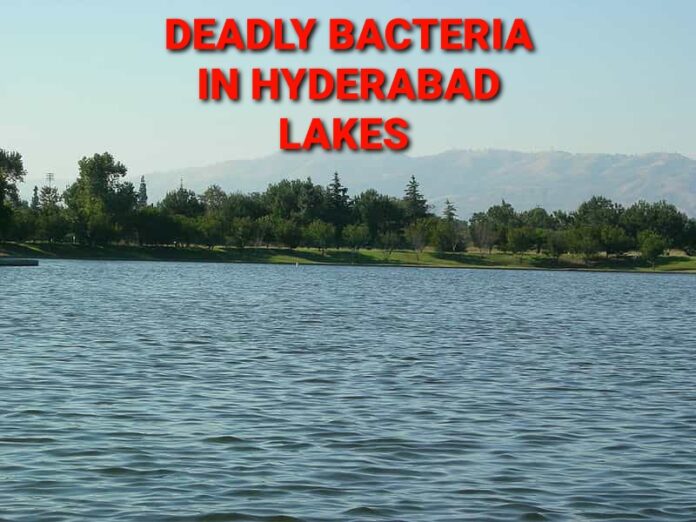There is a deadly bacteria growing in Hyderabad’s lakes and other water bodies apart from heavy metals, sewage and other pollutants. What makes this bacteria a cause of concern is that it contains the NDM-1 (New Delhi metallo-beta-lactamase-1) gene which provides resistance to the most effective class of antibiotics, known as carbapenems.
Carbapenems are the “last resort” antibiotics used in tough-to-treat infections caused by multi-drug resistant bacteria. Prof Thatikonda Shashidhar of the Department of Civil Engineering at IIT-Hyderabad, along with research scholar Rajeev Ranjan, collected water samples from a set of water bodies in and around Hyderabad and tested them for the presence of bacteria containing the NDM-1 gene.
They collected samples from the Manjeera dam, Singur dam, Manjeera water treatment plant, an outlet of the Amberpet Sewage Treatment Plant (STP) and 13 lakes — Durgam Cheruvu, Ameenpur, Osman Sagar, Alwal, Hussainsagar, Mominpet, Saroornagar, Fox Sagar, Himayatsagar, Kandi, Mir Alam, Nagole and Safilguda.
While the concentration varied, the presence of bacteria with the gene was detected in all samples. Speaking #KhabarLive, Prof Shashidhar said regardless of the variation in concentration, it is a serious matter of concern that bacteria with the NDM-1 gene has been detected in all samples.
Even coming in contact with the contaminated water from such water bodies is enough to put one in grave danger as the bacteria with the NDM-1 gene can cause infections in humans which might be hard or even impossible to treat.It can also cause loss of life. Such bacteria can transmit the NDM-1 gene to other bacteria in a human being — known as horizontal gene transfer — giving it similar resistance against carbapenems.
The research paper on the findings of this study goes on to point out that a “significant” population might have already been exposed to the NDM-1 gene carrying bacteria — the exposure can be anywhere between two out of 100 people to 77 out of 100, depending on the water body. The paper, ‘Risk-Assessment Method to Forecast Health Hazards Correlated with Distribution of NDM-1 Gene in Water Bodies Surrounding Hyderabad, India’, was published in the Journal of Environmental Engineering. #KhabarLive #hydnews








[…] Source link […]
Comments are closed.